Brake Time: The 10 Best-Braking Cars MotorTrend Has Ever Tested
Power and 0–60 times are exciting, but braking is necessary.
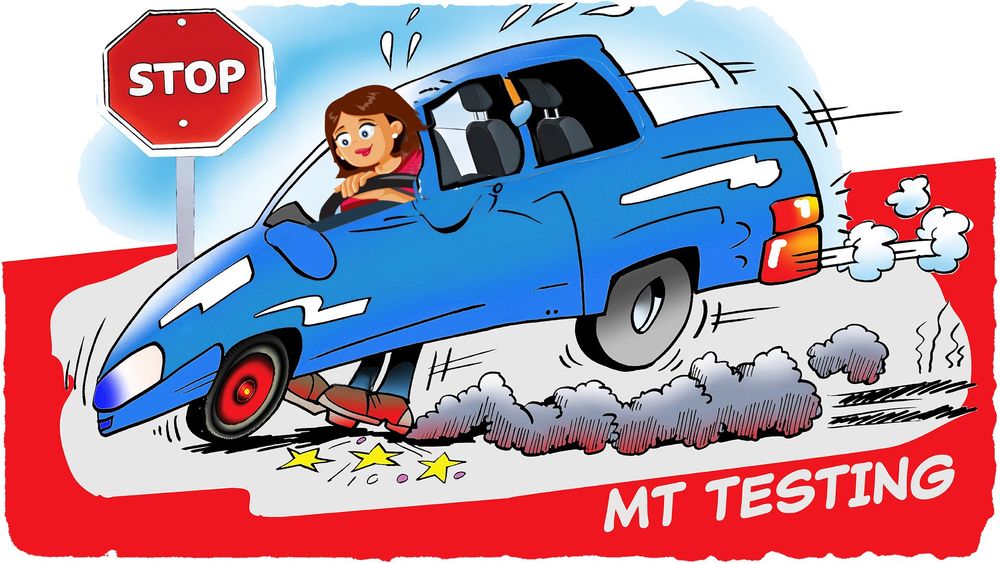
Here at MotorTrend, we love a fast car just as much as anyone else. What blasts from 0 to 60 mph quickest? It’s excellent stuff. But perhaps more important than what gets us up to speed is what brings us safely back down. The brakes themselves can obviously be the stars of the show, too, but a car’s overall braking system and tires are equally as important in the act of stopping quickly.
If you’ve ever wondered how MotorTrend conducts its comprehensive vehicle testing, it’s all laid out here (and, indeed, leads us to believe we’re well-prepared for the future of mobility). But for the sake of this story, we’ll highlight the important bit: “With the Vbox recording, we accelerate to just above 60 mph, hold that speed, then brake as hard as possible without slipping a tire. (Every new vehicle has antilock brakes, so that usually means simply mashing the pedal.) The distance measurement starts when the car decelerates through 60 mph and ends at a complete stop.
“Consequently, what we're reporting is the car's pure braking ability without the human variable of brake-response time. We do several stops—some in rapid succession in case the brake system functions better hot than cold—wait to see a trend or a plateau, choose the best one, round to the nearest foot, and report it. For some high-performance cars, we also perform a 100–0-mph brake test so that we can calculate a theoretical 0–100–0-mph time, which is always an interesting metric.”
More than that, though, is an additional bit of insight from our road test editor, Chris Walton. “I'd add that we also cut 60–0 stops from within those 100–0 stops,” he said. “We list all of those stops in order so the author can see the progression. As you know, all-season tires (and brake systems not well equipped to deal with the heat) tend to increase distances progressively. Sports cars and sporty SUVs with summer tires and robust brake systems (especially those with carbon-ceramic discs) often take five-plus stops to find the shortest stop. In fact, we often only do 100–0-mph stops (and cut the 60–0s out) with really racy cars because doing 60–0 stops won't bring the tires/brakes up to optimal temps for the best stops.”
What’s really fascinating about this list, however, is that even though our 0–60 acceleration times are dominated by battery electric cars, there isn’t one BEV on this list of shortest 60–0-mph stopping distances. In the most general of terms, this tells us while big horsepower gets you up to speed no problem, stopping is still very much rooted in how much your dang car weighs—and where that mass is situated in the car.
Below, you’ll find the shortest-stopping cars this outlet has tested as of today’s publish date. A few are obvious, but others were a surprise. There are a bunch of ties. There’s one winner.

10. 2015 Chevrolet Corvette Z06 (Z07 pkg) | 60–0 MPH in 90 FT
A sports car being offered with an automatic transmission rather than a manual was not yet the norm back in 2015, so the fact that the 2015 Chevy Corvette Z06 came with two pedals and eight gears rather than three pedals and seven gears warranted a mention. Still, 650 hp and 650 lb-ft of torque from a 6.2-liter supercharged V-8 is exciting no matter which way you shift it. In testing, we vastly enjoyed both versions and determined anyone can have fun in either and at all speeds. We just noted the automatic appeared to be geared shorter than the manual, as the manual could complete our figure eight test in second gear only, while the automatic required third.
But as for the braking? “Stopping the car proved even more impressive,” features editor Scott Evans wrote. “This Z06 needed a [then-]record-tying 90 feet to stop from 60 mph, besting both manual transmission Z06s we've tested by a foot.”

TECHNICAL SPECIFICATIONS

9. 2017 Chevrolet Corvette Grand Sport (7M) | 60–0 MPH in 90 FT
If ZR1s and Z06s are too much car for your needs (and who would blame you; they’re too much for most people’s needs), there’s always the lovely Grand Sport to consider. The 2017 Chevy Corvette Grand Sport not only carried on the tradition of being the livable performance ’Vette, but when equipped with the Z51 performance package, it also became a force to be reckoned with. Making a claimed 460 hp and 465 lb-ft of torque from its 6.2-liter naturally aspirated V-8, the manual Grand Sport is only a mere 0.3 second slower to 60 mph than the automatic.
Stopping, though? Tied with the 2015 Z06. “Braking from 60 to 0 mph is phenomenal, as well, happening in 90 feet,” senior features editor Jonny Lieberman wrote in 2016 when the test was published. “That's the third-best stopping distance we've ever tested, though the second-best car. Huh? Well, the ACR owns both the top two spots, stopping shorter in both Street and Track configurations, 87 versus 89 feet.” More on that when we get to it.
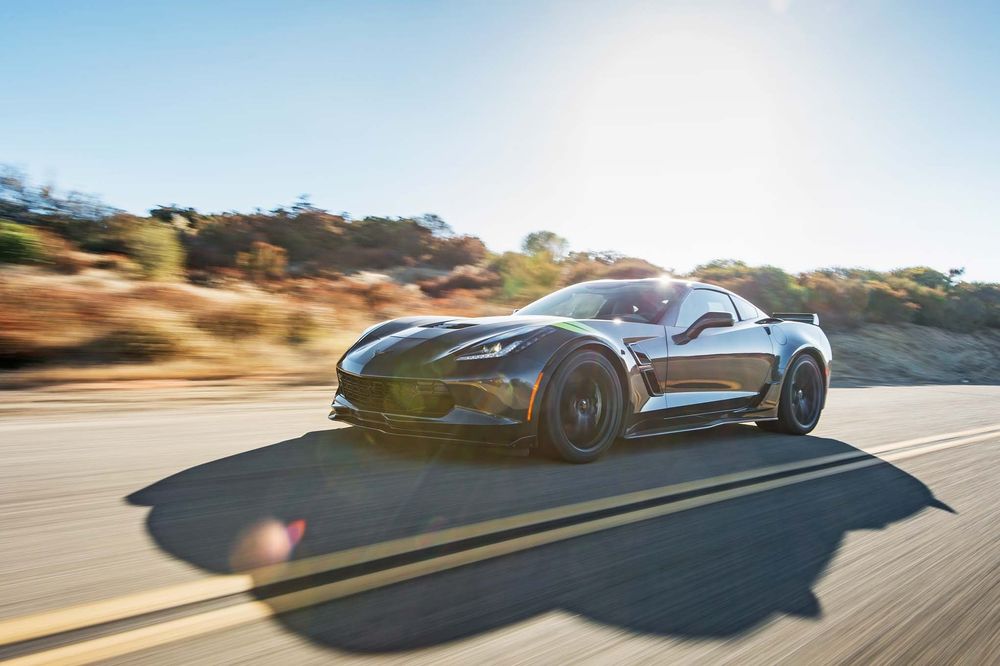
TECHNICAL SPECIFICATIONS

8. 2021 Ferrari SF90 Stradale Assetto Fiorano | 60–0 MPH in 90 FT
It sort of feels anticlimactic to already be talking about the 2021 Ferrari SF90 Stradale Assetto Fiorano at the third entry into this story, but that’s because as climactic as the car is everywhere else, its brakes keep it at the top of the list.
Although four years have passed since we drove the SF90 Stradale Assetto Fiorano, it still holds a handful of MotorTrend testing records: Among non-EVs, it put down the quickest quarter mile and is the quickest gas car to 60 mph. With powerful EVs like the Tesla Model S Plaid and Porsche Taycan Turbo GT factored in, the SF90 is still the third-quickest car to 60 mph we’ve ever tested. That’s insane stuff.
The SF90 does it with all-wheel drive and a gas-fed 4.0-liter V-8 hybrid engine that produces a claimed combined 986 hp. No wonder.
As for the brakes—yeah, it needs 90 feet to stop it from 60 mph, which effectively ties it with the two Corvettes mentioned above and the Mustang mentioned below, but it’s how they feel that’s significant.
“When a car is consistently hitting 150 mph by the time you lift off the throttle past the quarter-mile finish line, you want good brakes, and you get them,” Evans wrote. “Ferrari's first-ever brake-by-wire system sets massive carbon-ceramic discs, huge brake calipers, and the regenerative capability of the front motors to the task of hauling the car down to a stop. They do so with incredible force and—here's that trait again—consistency. Stopping from 60 mph requires just 90 feet, among the shortest we've ever recorded, the shortest being 87 feet set by the considerably lighter Porsche 911 GT2 RS Weissach Edition.
“What matters even more, though, is the brake feel. We've dinged both the 488 and F8 in the past for the wooden feel of their pedals and the amount of leg strength needed to get maximum braking performance, so we were already trepidatious even before considering the SF90 adopts a brake-by-wire system, which we've found across manufacturers to be all over the place in terms of pedal feel and response. We're thrilled to report Ferrari nailed it. The SF90's electronic brake pedal feels better than the purely mechanical ones in any of the company's recent models, and its artificially generated force-feedback is deceptively natural. It requires less effort to get maximum braking, even at 150 mph, and there's a far greater range of adjustability in pedal travel under hard braking.”

TECHNICAL SPECIFICATIONS
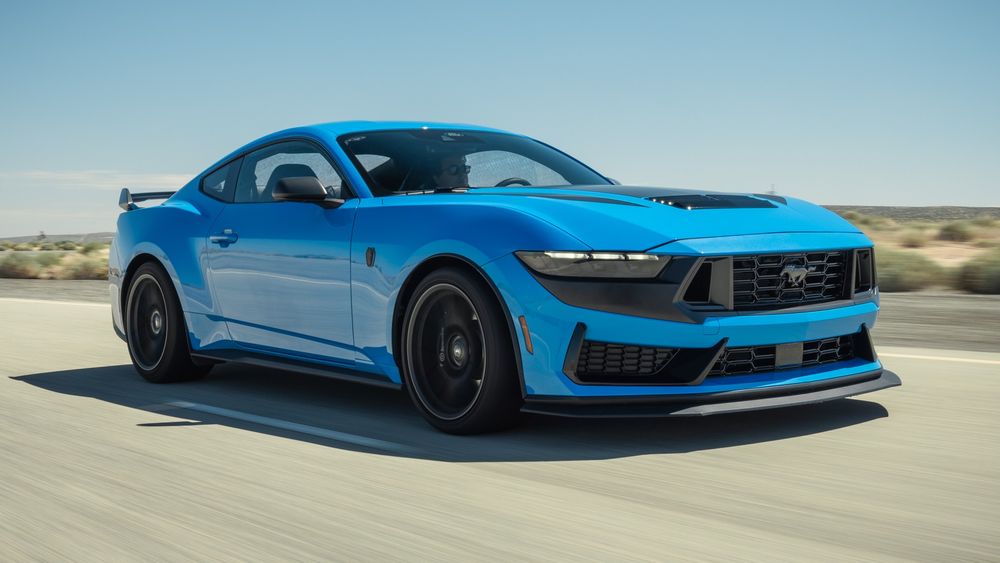
7. 2024 Ford Mustang Dark Horse Premium | 60–0 MPH in 90 FT
We truly didn’t expect to see a Mustang in this group of Ferraris and Corvettes, but here you have it: The 2024 Ford Mustang Dark Horse netted a stopping distance equal to a Ferrari many, many times its sticker price. Doesn’t that bring some power back to the people!?
Not that the Dark Horse is some kind of slouch otherwise. This top-trim Mustang now gets a 5.0-liter Coyote V-8 putting out a claimed 500 hp and 418 lb-ft of torque. Available with a six-speed manual or a 10-speed automatic, the Dark Horse is what we now get to fill the Shelby GT350-shaped hole in our hearts. The Premium trim is mostly an interior update package and doesn’t add or subtract any performance capabilities.
Now, onto the stopping power.
“When it came time to slow the fast horse down, a strange thing occurred,” senior editor Jason Gonderman wrote. “The 3,925-pound Mustang Dark Horse stopped from 60 mph to 0 in just 90 feet. For context, that's just 2 feet more than a Ferrari 296 GTB and 5 feet less than a Corvette Z06 with the Z07 track pack. ... This is due to a combination of the car's large 15.4-inch two-piece front brake rotors, Brembo calipers, and Ford's new brake-by-wire system. The wide and sticky Pirelli P Zero Trofeo RS tires certainly help, as well.”

TECHNICAL SPECIFICATIONS
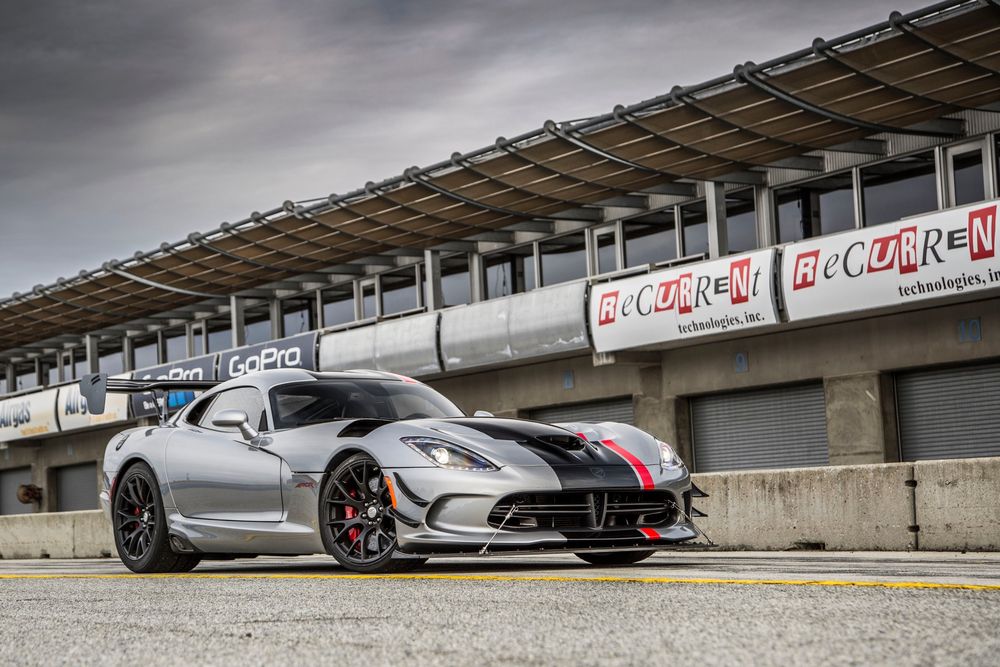
6. 2016 Dodge Viper ACR (track setup) | 60–0 MPH in 89 FT
In 2016, we pitted the 2016 Dodge Viper ACR against a 2016 Chevrolet Corvette Z06 against a 2016 Porsche 911 GT3 RS in a track shootout. You remember the ACR version of the Viper, yes? It was the baddest version of the Viper, with an aero kit to end all aero kits.
From its 8.4-liter V-10 came a claimed 645 hp and 600 lb-ft of torque. Six-speed manual, rear-wheel drive. Blistering acceleration times, incredible on-track athleticism.
Dodge actually loaned us two Vipers for the 2016 story, one set up for the track and one for the street.
“Dodge also gave us another ACR set up in Track mode—different compression and rebound settings for the dampers, a larger front splitter, a larger rear diffuser, and a different angle on the wing,” Lieberman wrote. “That one, a blue Viper not pictured, ran a 22.3-second figure eight.”
But the brakes remained the 15.4-inch vented, drilled carbon-ceramic discs in the front and 14.2-inch vented, drilled carbon-ceramic discs in the rear. With them, the Viper ACR managed an 89-foot stop from 60 mph in its track setup.

TECHNICAL SPECIFICATIONS

5. 2019 Chevrolet Corvette ZR1 (1ZR with ZTK) | 60–0 MPH in 88 FT
Remember the years leading up to the mid-engine Corvette? We do. In particular, we remember the 2019 Chevrolet Corvette ZR1, which ultimately ended up being the last and most powerful version of the front-engine Corvette.
The car we tested came equipped with the ZTK Track Performance package, which gives the ZR1 stiffer suspension tuning, a flat undercarriage for better aerodynamic downforce, the adjustable “high” wing, a front splitter with endplates, and Pilot Sport Cup 2 ZP tires. All this for an extra $3,000. They combine with the car’s 6.2-liter supercharged V-8 with a claimed 755 hp and 715 lb-ft of torque.
Our brake test happened in just 88 feet, with test driver Randy Pobst calling the stoppers “still strong—as always, world class.”

TECHNICAL SPECIFICATIONS
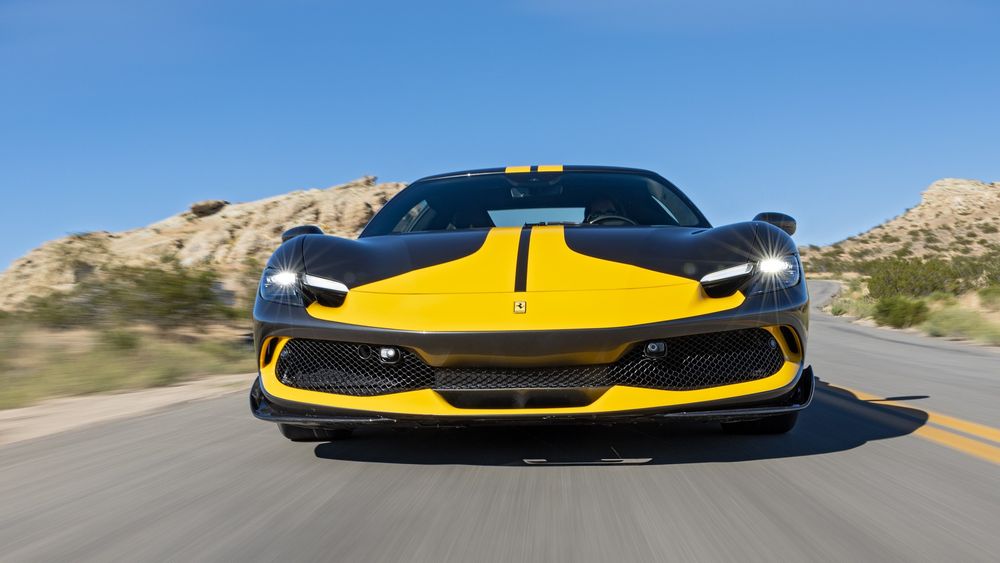
4. 2023 Ferrari 296 GTB (Asseto Fiorano) | 60–0 MPH in 88 FT
Just because the 2023 Ferrari 296 GTB Asseto Fiorano is lower on the power hierarchy than the certifiably berserk SF90, it’s no less impressive. It uses a 3.0-liter V-6 plug-in hybrid setup to produce a combined claimed 818 hp, sent to the rear wheels. So it doesn’t have that front axle action to help with off-the-line traction, but it almost doesn’t matter. The car is still the quickest rear-drive production car we’ve ever tested, quicker than the LaFerrari. In fact, it’s basically neck and neck with the SF90 through the quarter mile. Think about that next time you’re cross-shopping the two.
“Raw acceleration isn't the only thing the 2023 Ferrari 296 GTB does well,” Evans wrote. “When you're travelling near 150 mph after only a quarter of a mile, big brakes are a must. The 296 stops from 60 mph, our standard metric, in just 88 feet. That's 2 feet shorter than the heavier SF90 and among the shortest distances we've ever recorded. Only three cars stopped shorter, and only by a foot or two.”
That being said, the brakes don’t feel as great as the SF90’s. “Likewise, the brake pedal takes some getting used to,” Evans went on. “This is Ferrari's second go at a brake-by-wire system, and it's not quite as good as the first attempt (the SF90); it's better than the F8 and 488 before it. ... The 296 has a slightly wooden brake pedal feel that requires you to apply a bit of blind trust in the braking system rather than relying entirely on what your foot tells you.”

TECHNICAL SPECIFICATIONS
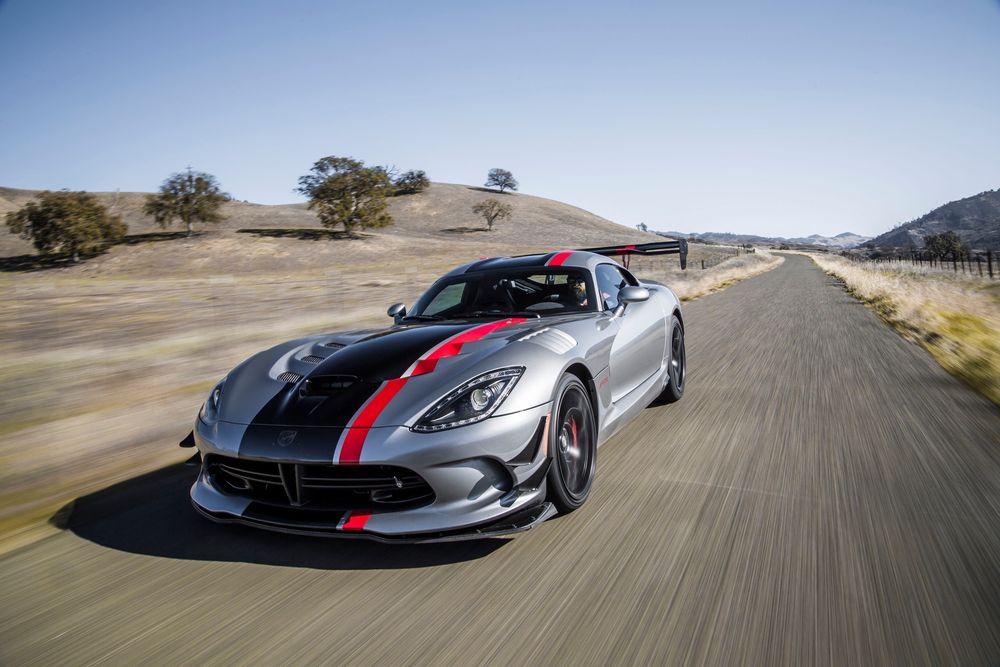
3. 2016 Dodge Viper ACR (street setup) | 60–0 MPH in 87 FT
Back again on this list is that 2016 Dodge Viper ACR, but this time with a street setup rather than with the track setup’s hardware.
“Speaking of the ACR, Pobst danced the silver car, its electronics set to Track mode, around the track in 1:30.46, beating the Z06, the GT3 RS, and even the $1.15 million McLaren P1, which ran a 1:30.71,” Lieberman wrote. “True, he was nowhere near his [Porsche] 918 Spyder time, but as Pobst said, ‘God bless America, all 8.4 liters of it!’ Pobst was positively beaming as he stepped out of the Viper. ‘It's such a great feeling to be able to take such a powerful car on track and it's hooked up!’ he said. ‘And it's … it's … it handles better than the Porsche and the Corvette.’ The gathered peanut gallery exclaimed, ‘Wow!’ To which Randy answered, ‘In every way! And it's usable. You don't have to be a pro to go fast in this car.’ I think you see where this is going.”
With the same brake kit as above, the street ACR actually managed to set a shorter braking distance of 87 feet versus 89.
“The ACR just shattered our braking record, stopping from 60 mph in a neck-snapping 87 feet,” Lieberman went on. “Why? The big carbon Brembos help, but so do the ultra-sticky Kumhos, as well as all that fancy aero.”
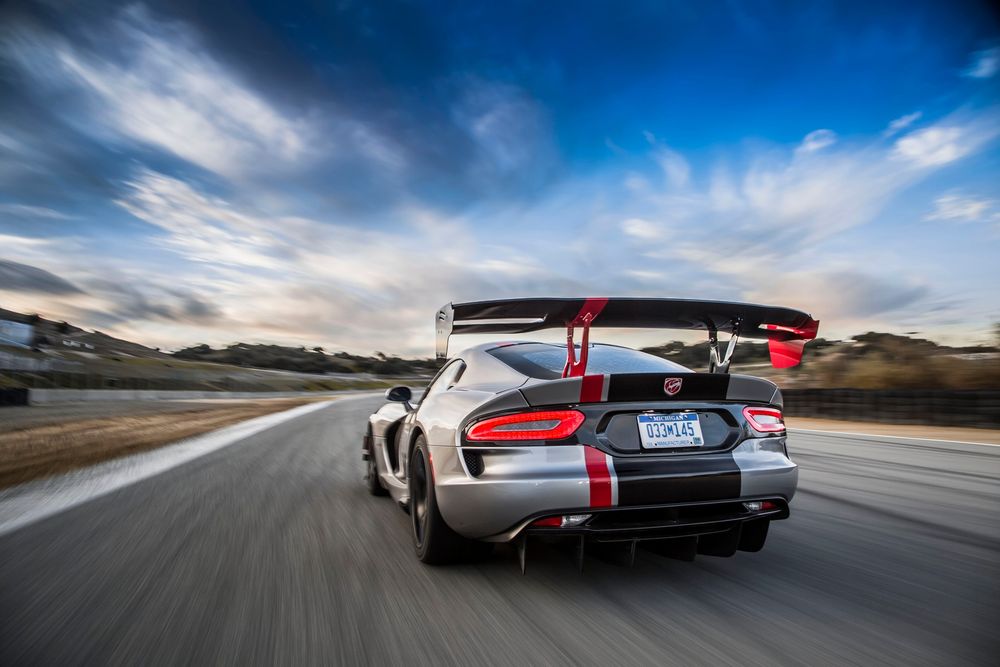
TECHNICAL SPECIFICATIONS
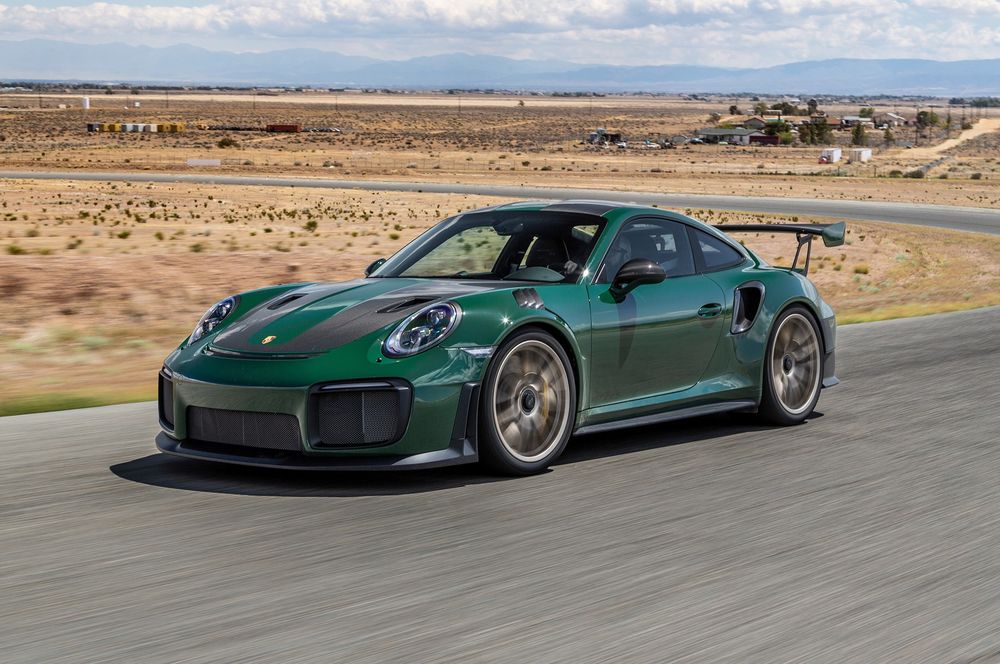
2. 2018 Porsche 911 GT2 RS Weissach Edition | 60–0 MPH in 87 FT
The thing to understand about the 2018 Porsche 911 GT2 RS (here equipped as the Weissach Edition) is it’s not meant for cracking off the quickest 0–60 times. That’s for the Turbo and Turbo S.
The GT2 RS is for setting lap times, which is obviously a combination of power, grip, aerodynamics, braking—everything. It uses a 3.8-liter twin-turbo flat-six and sends a claimed 690 hp and 553 lb-ft of torque to the rear wheels via a seven-speed dual-clutch. In addition to the Weissach package (which cuts weight), the GT2 RS test car also wore magnesium wheels; together, they reduced curb weight by about 40 pounds.
“So how did the GT2 RS do?” Lieberman wrote. “Meet the new champ in our key performance tests. This British Racing Green Porsche is the first production car to ever break into the 21s in the figure-eight test, posting a 21.9-second lap. Nice work. It tied our [then-]shortest 60–0 mph stop (with Viper ACR)” at 87 feet as well.”

TECHNICAL SPECIFICATIONS

1. 2024 Ford Mustang Dark Horse (10A Premium) | 60–0 MPH in 86 FT
So the 2018 GT2 RS sat prettily atop the braking leaderboards for six whole years, probably thinking no one would come along to usurp it—least of all not some common Mustang. But that’s exactly what happened.
The manual version of the Dark Horse put down a stopping distance of 90 feet, as you read above. But the 10-speed automatic version? The 4,000-pound car that also happens to be the heaviest one on this top 10 list? You already know the engine specs, so we’ll get right to it:
“Braking distances aren't as sexy as horsepower and acceleration, but if you're going to be fast, you need to stop fast,” senior technical editor Matthew Chudzinski wrote. “The Dark Horse has that covered. In fact, it out-brakes every production car we've ever tested. Its 86-foot 60–0-mph stop edges out the 2018 Porsche 911 GT2 RS and 2016 Dodge Viper ACR by 1 foot.
“That 86-foot stop wasn't an anomaly, either. In order, we recorded stops at 92, 91, 90, 88, 87, 90, 86, 89, 88, 90, 91, and 90 feet. The list of cars that match or beat the Mustang's longest 92-foot stop is dominated by Porsche but also includes giants such as the McLaren Senna, the Ferrari SF90 Stradale Assetto Fiorano, and the best Chevrolet Corvettes. It's clear from the results that the six-piston Brembo front calipers and two-piece rotors perform better with some heat in them and don't fade.”
That doesn’t mean those brakes are uncomfortable to use day to day, though. The pedal bites smoothly up top for comfortable daily use, no extra effort required. You just have to remember the person behind you definitely can’t stop as quickly as you if you do stomp on your brakes.
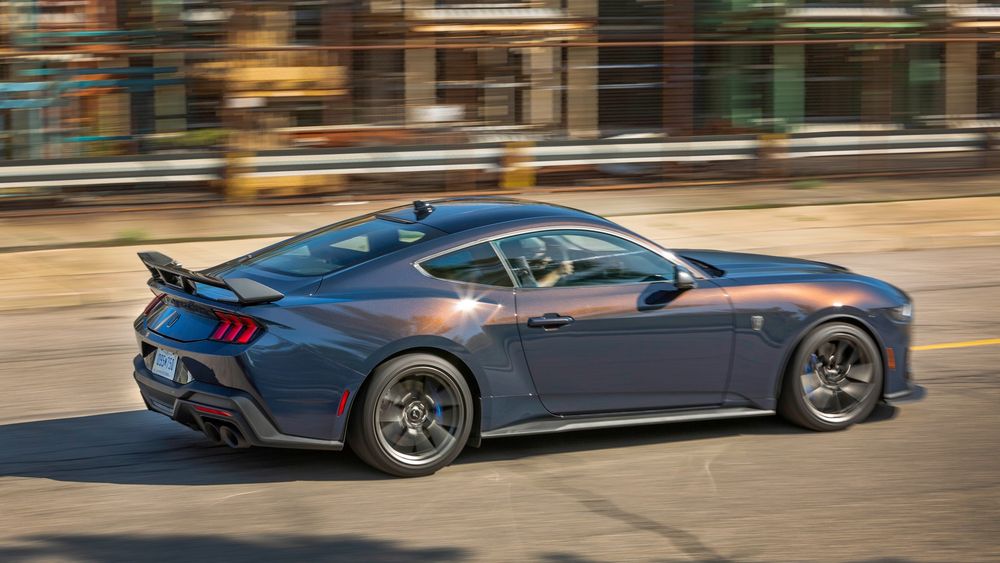
TECHNICAL SPECIFICATIONS
10 Vehicles With the Best Braking Times MotorTrend Has Ever Tested
- 10. 2015 Chevrolet Corvette Z06 (Z07 pkg) | 60–0 MPH in 90 ft
- 9. 2017 Chevrolet Corvette Grand Sport (7M) | 60–0 MPH in 90 ft
- 8. 2021 Ferrari SF90 Stradale Assetto Fiorano | 60–0 MPH in 90 ft
- 7. 2024 Ford Mustang Dark Horse Premium | 60–0 MPH in 90 ft
- 6. 2016 Dodge Viper ACR (track setup) | 60–0 MPH in 89 ft
- 5. 2019 Chevrolet Corvette ZR1 (1ZR with ZTK) | 60–0 MPH in 88 ft
- 4. 2023 Ferrari 296 GTB (Asseto Fiorano) | 60–0 MPH in 88 ft
- 3. 2016 Dodge Viper ACR (street setup) | 60–0 MPH in 87 ft
- 2. 2018 Porsche 911 GT2 RS Weissach Edition | 60–0 MPH in 87 ft
- 1. 2024 Ford Mustang Dark Horse (10A Premium) | 60–0 MPH in 86 ft
I got into cars the way most people do: my dad. Since I was little, it was always something we’d talk about and I think he was stoked to have his kid share his interest. He’d buy me the books, magazines, calendars, and diecast models—everything he could do to encourage a young enthusiast. Eventually, I went to school and got to the point where people start asking you what you want to do with your life. Seeing as cars are what I love and writing is what I enjoy doing, combining the two was the logical next step. This dream job is the only one I’ve ever wanted. Since then, I’ve worked at Road & Track, Jalopnik, Business Insider, The Drive, and now MotorTrend, and made appearances on Jay Leno’s Garage, Good Morning America, The Smoking Tire Podcast, Fusion’s Car vs. America, the Ask a Clean Person podcast, and MotorTrend’s Shift Talkers. In my spare time, I enjoy reading, cooking, and watching the Fast & Furious movies on repeat. Tokyo Drift is the best one.
Read More